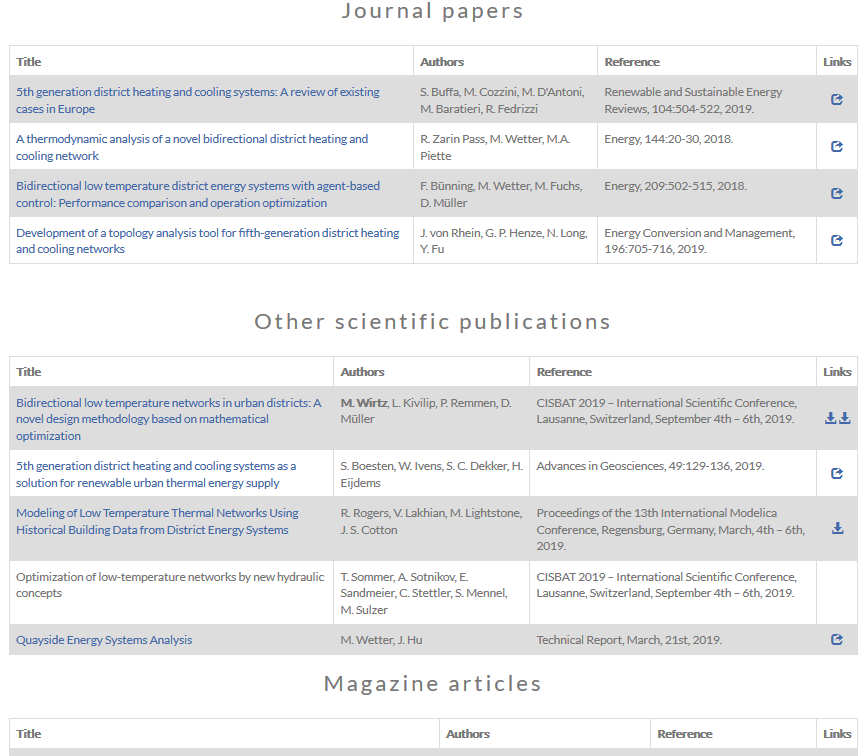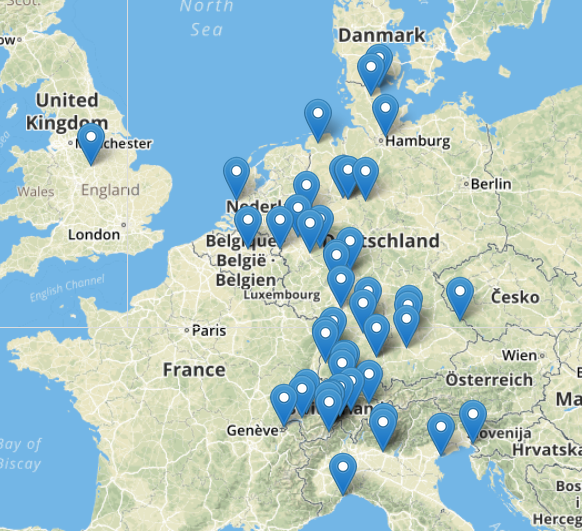

5GDHC networks are increasingly investigated in scientific research.
Find a list of recent scientific publications here.

More than 50 projects with 5GDHC networks have been realized in Europe.
Have a look on the interactive map!

5th Generation District Heating and Cooling (5GDHC) networks are the latest development stage of district heating networks. They are also called
A 5GDHC network is a thermal energy supply grid that uses water or brine as a carrier medium and hybrid substations with Water Source Heat Pumps (WSHP). It operates at temperatures so close to the ground that it is not suitable for direct heating purpose. The low temperature of the carrier medium gives the opportunity to exploit directly industrial and urban excess heat and the use of renewable heat sources at low thermal exergy content. The possibility to reverse the operation of the customer substations permits to cover simultaneously and with the same pipelines both the heating and cooling demands of different buildings. Through hybrid substations, 5GDHC technology enhances sector coupling of thermal, electrical and gas grids in a decentralised smart energy system.

Let's take the next step in low-ex #districtheating: 5th Generation DH! #5GDH #5GDHC #4DH #4GDH #wasteheat #heatrecovery #sectorcoupling #energiewende #decarbonization #heatpump @ectogrid @EON_SE_en @EON_agileNordic @EON_de @HeatRoadmapEU @THERMOS_eu @LowTEMPdh @Flexynets pic.twitter.com/18kJSe15m2
— Marco Wirtz (@Marco__Wirtz) May 24, 2019
Planning 5GDHC networks is callenging: Check out our NEW PAPER presenting a mathematical optimization approach: https://t.co/67AMCo0UkD
— Marco Wirtz (@Marco__Wirtz) January 17, 2020
(or: https://t.co/0vyIXRUsML) #5GDHC #4DH #4GDH #wasteheat #heatrecovery #heatpump @HeatRoadmapEU @THERMOS_eu @LowTEMPdh @ralf_roman pic.twitter.com/OFMz3fKPmz
In our new #paper we present the Demand Overlap Coefficient (DOC) as new metric to quantify simultaneity of heat and cold demands in districts.
— Marco Wirtz (@Marco__Wirtz) June 29, 2020
Larger DOC (simultaneity) = more waste heat recovery = higher efficiency of #5GHDC netw.https://t.co/oQX8pHfkV3 (free⬇️until 16th Aug) pic.twitter.com/kNyGQ0xOg9
Wärmenetze der 5. Generation (#5GDHC) als Schlüsseltechnologie für die urbane Wärmewende? - Antworten in unserem Artikel der neuen @EuroheatPower! @bdew_ev @BDH_Waermewende @dena @RWTH #Reallabor #TransUrbanNRW @a_pinkwart @WP_NRW #power2heat #wärmewende #waermepumpe #CO2Preis pic.twitter.com/X3z25dwrIQ
— Marco Wirtz (@Marco__Wirtz) September 15, 2019
